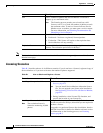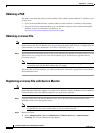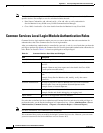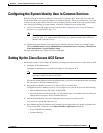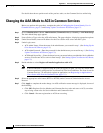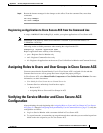
C-1
Installation Guide for Cisco Unified Service Monitor
OL-25111-01
APPENDIX
C
Security Configuration with Cisco Secure ACS
To configure Service Monitor to use Cisco Secure ACS for authentication and authorization, work
through these topics in order:
• Cisco Secure ACS Support, page C-1
• Service Monitor Integration Notes, page C-1
• Common Services Local Login Module Authentication Roles, page C-2
• Configuring the System Identity User in Common Services, page C-3
• Setting Up the Cisco Secure ACS Server, page C-3
• Changing the AAA Mode to ACS in Common Services, page C-4
• Assigning Roles to Users and User Groups in Cisco Secure ACS, page C-5
• Verifying the Service Monitor and Cisco Secure ACS Configuration, page C-5
Cisco Secure ACS Support
Service Monitor supports the ACS mode of authentication and authorization. To use this mode, you must
have a Cisco Secure Access Control Server (ACS), installed in your network on a server separate from
the one where Service Monitor is installed. For the supported software version, see Table 1-1.
Service Monitor Integration Notes
Service Monitor (and Common Services) integrate with Cisco Secure ACS as shared profile components.
Multiple instances of the same application—for example, Service Monitor—can use the same Cisco
Secure ACS server for authentication and authorization.
When you register Cisco Unified Service Monitor (and Common Services) with Cisco Secure ACS, the
applications tasks—such as adding data source credentials to Service Monitor—and user roles—such as
Network Administrator—for the application are imported into Cisco Secure ACS.
You only need to register one instance of an application with Cisco Secure ACS for tasks and roles to be
imported. If you register an application a second time, any changes that you have made to role settings,
such as creating custom roles, are lost.






